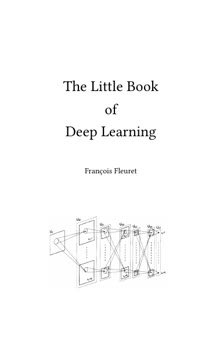Key Takeaways
1. Deep Learning Learns from Data by Minimizing a Loss
Then, training the model consists of computing a value w∗ that minimizes ℒ(w∗).
Learning from data. Deep learning, a subset of machine learning, focuses on models that learn representations directly from data. Instead of hand-coding rules, we collect a dataset of inputs and desired outputs, then train a parametric model to approximate the relationship between them. The model's behavior is modulated by trainable parameters, often called weights.
Formalizing goodness. The goal is to find parameter values that make the model a "good" predictor on unseen data. This is formalized using a loss function, ℒ(w), which measures how poorly the model performs on the training data for a given set of parameters w. Common losses include mean squared error for regression and cross-entropy for classification.
Training is optimization. The core task of training is to find the optimal parameters w* that minimize this loss function. This optimization process is central to deep learning, and the choice of model architecture and training techniques are heavily influenced by the need to make this minimization efficient and effective, especially for complex, high-dimensional data.
2. Efficient Computation on Specialized Hardware is Crucial
The Graphical Processing Units (GPUs) have been instrumental in the success of the field by allowing such computations to be run on affordable hardware.
Hardware acceleration. Deep learning involves massive computations, primarily linear algebra operations on large datasets. The parallel architecture of GPUs, originally designed for graphics, proved exceptionally well-suited for these tasks, making large-scale deep learning feasible on accessible hardware. Specialized chips like TPUs have further optimized this.
Memory hierarchy matters. Efficient computation on GPUs requires careful data management. The bottleneck is often data transfer between CPU and GPU memory, and within the GPU's own memory hierarchy. Processing data in batches that fit into fast GPU memory minimizes these transfers, allowing parallel computation across samples.
Tensors are key. Data, model parameters, and intermediate results are organized as tensors, multi-dimensional arrays. Deep learning frameworks manipulate tensors efficiently, abstracting away low-level memory details and enabling complex operations like reshaping and extraction without costly data copying. This tensor-based approach is fundamental to achieving high computational throughput.
3. Gradient Descent and Backpropagation Drive Training
The combination of this computation with the procedure of gradient descent is called backpropagation.
Minimizing the loss. Since the loss function for deep models is usually complex without a simple closed-form solution, gradient descent is the primary optimization algorithm. It starts with random parameters and iteratively updates them by moving a small step in the direction opposite to the gradient of the loss, which is the direction of steepest decrease.
Stochastic updates. Computing the exact gradient over the entire dataset is computationally prohibitive. Stochastic Gradient Descent (SGD) uses mini-batches of data to compute a noisy but unbiased estimate of the gradient, allowing for many more parameter updates for the same computational cost. This mini-batch approach is standard practice, often enhanced by optimizers like Adam.
Backpropagation computes gradients. Backpropagation is the algorithm that efficiently computes the gradient of the loss with respect to all model parameters. It works by applying the chain rule of calculus backward through the layers of the network, computing gradients layer by layer. This backward pass, combined with the forward pass that computes the model's output, forms the core computational loop of deep learning training.
4. Depth and Scale Unlock Powerful Capabilities
There is an accumulation of empirical results showing that performance... improves with the amount of data according to remarkable scaling laws...
The value of depth. Deep models, composed of many layers, can learn more complex and hierarchical representations than shallow ones. While theoretically a single-layer network can approximate any function, deep architectures are empirically shown to achieve state-of-the-art performance across diverse domains, requiring tens to hundreds of layers.
Scaling laws. A key finding is that model performance often improves predictably with increased scale: more data, more parameters, and more computation. This has driven the trend towards increasingly massive models, trained on enormous datasets, leading to breakthroughs like Large Language Models.
Benefits of scale. Large models, despite their immense capacity, often generalize well, challenging traditional notions of overfitting. Their scale, combined with distributed training techniques like SGD on massive datasets, allows them to capture intricate patterns and knowledge that smaller models cannot, albeit at significant computational and financial cost.
5. Deep Models are Built from Reusable Layers
We call layers standard complex compounded tensor operations that have been designed and empirically identified as being generic and efficient.
Modular components. Deep models are constructed by stacking or connecting various types of layers, which are reusable, parameterized tensor operations. This modularity simplifies model design and allows for the creation of complex architectures from well-understood building blocks.
Core layer types:
- Linear/Fully Connected: Perform affine transformations (matrix multiplication + bias).
- Convolutional: Apply localized, shared affine filters across spatial or temporal dimensions, capturing local patterns and enabling translation invariance.
- Activation Functions: Introduce non-linearity (e.g., ReLU, GELU) essential for learning complex mappings.
- Pooling: Reduce spatial size by summarizing local regions (e.g., max pooling).
- Normalizing Layers: Stabilize training by normalizing activation statistics (e.g., Batch Norm, Layer Norm).
- Dropout: Regularize by randomly setting activations to zero during training.
- Skip Connections: Allow signals to bypass layers, aiding gradient flow and training of very deep networks.
Engineering for optimizability. Many layer designs, like skip connections and normalization layers, were developed specifically to mitigate training challenges like the vanishing gradient problem, shifting focus from generic optimization to designing models that are inherently easier to optimize.
6. Attention Mechanisms Connect Distant Information
Attention layers specifically address this problem by computing an attention score for each component of the resulting tensor to each component of the input tensor, without locality constraints...
Beyond locality. While convolutional layers excel at processing local information, many tasks require integrating information from distant parts of a signal, such as understanding dependencies between words far apart in a sentence or relating objects in different parts of an image. Attention layers provide a mechanism for this global interaction.
Query, Key, Value. The core attention operator computes scores representing the relevance of each "query" element to every "key" element, typically using dot products. These scores are then used to compute a weighted average of "value" elements, effectively allowing each query to "attend" to relevant information across the entire input sequence.
Multi-Head Attention. The Multi-Head Attention layer enhances this by performing multiple attention computations in parallel ("heads") with different learned linear transformations for queries, keys, and values. The results from these heads are concatenated and linearly combined, allowing the model to jointly attend to information from different representation subspaces at different positions. This mechanism is a cornerstone of modern architectures like the Transformer.
7. Key Architectures Tackle Different Data Structures
The architecture of choice for such tasks, which has been instrumental in recent advances in deep learning, is the Transformer...
MLPs for simple data. The Multi-Layer Perceptron (MLP), a stack of fully connected layers with activations, is the simplest deep architecture. While theoretically universal approximators, they are impractical for high-dimensional structured data due to excessive parameters and lack of inductive bias.
ConvNets for grids. Convolutional Networks (ConvNets) are the standard for grid-like data such as images. They use convolutional and pooling layers to build hierarchical, translation-invariant feature representations, often culminating in fully connected layers for tasks like classification. Architectures like LeNet and ResNet (which incorporates skip connections for depth) are prime examples.
Transformers for sequences. Transformers, built primarily on attention layers, have become dominant for sequence data like text and increasingly for images. Their ability to model long-range dependencies globally, combined with positional encodings to retain sequence order, makes them highly effective. The encoder-decoder structure for translation and the decoder-only GPT for generation are key variants.
8. Deep Learning Excels at Prediction Tasks
A first category of applications... requires predicting an unknown value from an available signal.
Mapping input to output. Prediction tasks involve using a deep model to estimate a target value or category based on an input signal. This is the classic supervised learning setup, where the model is trained on pairs of inputs and corresponding ground truths.
Diverse applications:
- Image Classification: Assigning a single label to an image (e.g., ResNets, ViT).
- Object Detection: Identifying objects and their bounding boxes in an image (e.g., SSD, using ConvNet backbones).
- Semantic Segmentation: Classifying every pixel in an image (often uses ConvNets with downscaling/upscaling and skip connections).
- Speech Recognition: Converting audio signals into text sequences (e.g., Transformer-based models like Whisper).
- Reinforcement Learning: Learning optimal actions in an environment to maximize reward (e.g., DQN using ConvNets to estimate state-action values).
Leveraging pre-training. For tasks with limited labeled data, models pre-trained on large, related datasets (like image classification or language modeling) can be fine-tuned, significantly improving performance by leveraging learned general representations.
9. Deep Learning Enables Complex Synthesis
A second category of applications distinct from prediction is synthesis.
Modeling data distributions. Synthesis tasks involve generating new data samples that resemble a training dataset. This requires the model to learn the underlying probability distribution of the data, rather than just mapping inputs to outputs.
Text generation. Autoregressive models, particularly large Transformer-based models like GPT, are highly successful at generating human-like text. Trained to predict the next token in a sequence, they learn complex linguistic structures and world knowledge, enabling coherent and contextually relevant text generation, including few-shot learning capabilities.
Image generation. Diffusion models are a powerful recent approach to image synthesis. They learn to reverse a gradual degradation process (like adding noise) that transforms data into a simple distribution. By starting with random noise and iteratively applying the learned denoising steps, they can generate high-quality, diverse images, which can often be conditioned on text descriptions or other inputs.
10. The Field Extends Beyond Core Models and Supervised Learning
Such models constitute one category of a larger class of methods that fall under the name of self-supervised learning, and try to take advantage of unlabeled datasets.
Beyond standard architectures. While MLPs, ConvNets, and Transformers are prominent, other architectures exist for different data types, such as Recurrent Neural Networks (RNNs) for sequences (historically important) and Graph Neural Networks (GNNs) for non-grid data like social networks or molecules.
Learning representations. Autoencoders, including Variational Autoencoders (VAEs), focus on learning compressed, meaningful latent representations of data, useful for dimensionality reduction or generative modeling. Generative Adversarial Networks (GANs) use a competitive process between a generator and discriminator to produce realistic samples.
Self-supervised learning. A major trend is leveraging vast amounts of unlabeled data through self-supervised learning. Models are trained on auxiliary tasks where the "label" is derived automatically from the data itself (e.g., predicting masked parts of an input). This pre-training learns powerful general representations that can then be fine-tuned on smaller labeled datasets for specific downstream tasks, reducing reliance on expensive human annotation.
Last updated:
FAQ
1. What is "The Little Book of Deep Learning" by François Fleuret about?
- Concise deep learning overview: The book provides a compact yet comprehensive introduction to deep learning, focusing on the foundational concepts, model architectures, and practical applications.
- Bridges theory and practice: It explains the mathematical and computational principles behind deep learning, including key algorithms, model components, and training protocols.
- Accessible for broad audience: Written to be approachable for readers with a basic background in mathematics and programming, it avoids unnecessary technical jargon and exhaustive detail.
- Focus on essential models: Rather than being encyclopedic, the book centers on the background needed to understand a few important deep learning models and their real-world impact.
2. Why should I read "The Little Book of Deep Learning" by François Fleuret?
- Efficient learning path: The book distills the vast field of deep learning into its most essential elements, making it ideal for readers who want a solid foundation without wading through excessive detail.
- Practical insights: It balances mathematical rigor with practical advice on model design, training, and implementation, making it useful for both students and practitioners.
- Up-to-date context: The book covers recent advances, such as attention mechanisms and large language models, situating them within the broader evolution of AI.
- Authoritative perspective: Authored by a university professor with deep expertise, it reflects both academic and applied viewpoints.
3. What are the key takeaways from "The Little Book of Deep Learning"?
- Deep learning fundamentals: Understanding of how deep learning models learn from data, the importance of model capacity, and the trade-offs between underfitting and overfitting.
- Model components and architectures: Clarity on the building blocks of deep models—layers, activations, normalization, attention, and skip connections—and how they are combined in architectures like MLPs, CNNs, and Transformers.
- Training and optimization: Insights into loss functions, gradient descent, backpropagation, and the challenges of scaling models and data.
- Applications and impact: Awareness of how deep learning is applied in image processing, natural language, reinforcement learning, and generative tasks, as well as the significance of large-scale models.
4. How does "The Little Book of Deep Learning" define and explain the foundations of machine learning and deep learning?
- Machine learning context: The book situates deep learning within the broader field of statistical machine learning, emphasizing learning representations from data.
- Model training process: It explains the process of collecting data, defining parametric models, and optimizing trainable parameters (weights) to minimize a loss function.
- Model categories: The book distinguishes between regression, classification, and density modeling, clarifying supervised and unsupervised learning.
- Overfitting and underfitting: It discusses the balance between model capacity and data, introducing the concepts of underfitting, overfitting, and inductive bias.
5. What are the main computational tools and techniques discussed in "The Little Book of Deep Learning"?
- Hardware acceleration: The book highlights the role of GPUs and TPUs in enabling large-scale deep learning through parallel computation and efficient memory management.
- Tensors as core data structure: It explains how tensors generalize vectors and matrices, serving as the primary data structure for signals, parameters, and activations.
- Batch processing: The importance of organizing computations in batches to maximize hardware efficiency and minimize memory transfer overhead is emphasized.
- Deep learning frameworks: The book references tools like PyTorch and JAX, which facilitate tensor operations and automatic differentiation.
6. How does "The Little Book of Deep Learning" describe the process of training deep models?
- Loss functions: The book covers standard losses for regression (mean squared error), classification (cross-entropy), and contrastive learning.
- Gradient descent and variants: It details the use of gradient descent, stochastic gradient descent (SGD), and advanced optimizers like Adam for parameter updates.
- Backpropagation: The chain rule is used to compute gradients efficiently through forward and backward passes, with frameworks automating this process.
- Training protocols: The book discusses the use of training, validation, and test sets, learning rate schedules, and the challenges of overfitting and scaling.
7. What are the key model components and layers explained in "The Little Book of Deep Learning"?
- Linear and convolutional layers: The book explains fully connected (linear) layers and convolutional layers, including their parameters, meta-parameters, and roles in feature extraction.
- Activation functions: It covers non-linearities like ReLU, Tanh, Leaky ReLU, and GELU, highlighting their impact on model expressiveness and training dynamics.
- Pooling and dropout: Pooling layers (max and average) reduce spatial dimensions, while dropout introduces regularization by randomly zeroing activations.
- Normalization and skip connections: Batch normalization and layer normalization stabilize training, while skip and residual connections help mitigate vanishing gradients and enable deeper networks.
8. How does "The Little Book of Deep Learning" explain attention mechanisms and their importance?
- Attention operator: The book details how attention computes weighted combinations of input features, allowing models to focus on relevant parts of the data regardless of position.
- Multi-head attention: It describes how multiple attention heads capture diverse relationships in the data, forming the backbone of Transformer architectures.
- Self-attention and cross-attention: The distinction between self-attention (within a sequence) and cross-attention (between sequences) is clarified, with applications in language and vision.
- Positional encoding: Since attention is position-agnostic, the book explains how positional encodings are added to retain order information in sequences.
9. What are the main deep learning architectures covered in "The Little Book of Deep Learning"?
- Multi-Layer Perceptrons (MLPs): The book introduces MLPs as stacks of fully connected layers, referencing the universal approximation theorem.
- Convolutional Neural Networks (CNNs): It covers classic architectures like LeNet, VGG, and ResNet, explaining the use of convolutional, pooling, and residual blocks.
- Transformers: The book provides a detailed breakdown of the Transformer architecture, including encoder-decoder structure, self-attention, and its variants like GPT and Vision Transformer (ViT).
- Design trade-offs: It discusses how different architectures are suited to different tasks, balancing accuracy, scalability, and computational cost.
10. How does "The Little Book of Deep Learning" address real-world applications of deep learning?
- Image processing: The book covers image denoising, classification, object detection, and semantic segmentation, explaining the architectures and training strategies for each.
- Speech and language: It discusses speech recognition as sequence-to-sequence translation using Transformers, and text-image representation learning with models like CLIP.
- Reinforcement learning: The Deep Q-Network (DQN) is presented as an example of applying deep learning to decision-making tasks like Atari games.
- Generative models: The book explores text generation with large language models (LLMs) and image generation using diffusion models.
11. What are the benefits and challenges of scaling deep learning models, according to "The Little Book of Deep Learning"?
- Scaling laws: The book presents empirical evidence that model performance improves predictably with increased data, model size, and computation, as long as they scale together.
- Hardware and data constraints: It discusses the need for massive computational resources (GPUs/TPUs) and large, often automatically curated datasets to train state-of-the-art models.
- Training costs: The financial and energy costs of training large models are highlighted, with some models requiring months of computation and millions of dollars.
- Overfitting paradox: Despite their extreme capacity, large models often generalize well, possibly due to inductive biases and the nature of optimization at scale.
12. What advanced topics and future directions does "The Little Book of Deep Learning" mention?
- Missing bits: The book briefly introduces topics not covered in depth, such as Recurrent Neural Networks (RNNs), Variational Autoencoders (VAEs), Generative Adversarial Networks (GANs), and Graph Neural Networks (GNNs).
- Self-supervised learning: It highlights the trend toward leveraging unlabeled data through self-supervised tasks, which underpin the success of large language and vision models.
- Fine-tuning and RLHF: The importance of fine-tuning large models for specific tasks, often using Reinforcement Learning from Human Feedback, is discussed.
- Ongoing evolution: The book acknowledges the rapid pace of innovation in deep learning, suggesting that new architectures and training paradigms will continue to emerge.
Review Summary
The Little Book of Deep Learning receives mostly positive reviews, praised for its concise overview of deep learning concepts. Readers appreciate its compact format and dense information, though some find it too advanced for beginners. The book covers fundamental topics, neural networks, and model architectures, with clear diagrams. While some readers struggle with the mathematical content, many find it a valuable reference. The free PDF version is highlighted as a thoughtful offering. Some criticize its brevity, suggesting it's best paired with other resources for a comprehensive understanding.
Similar Books



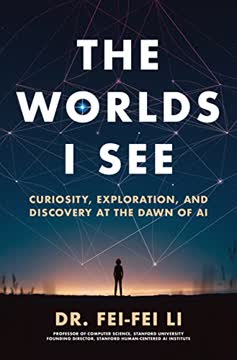
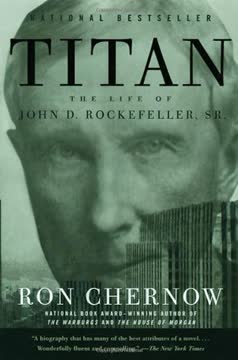

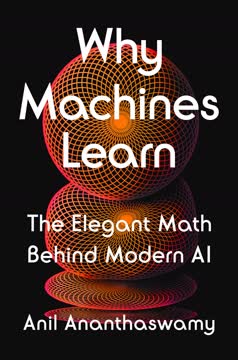
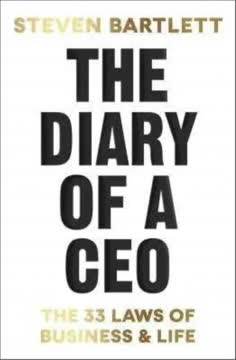
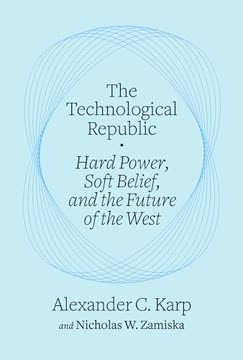
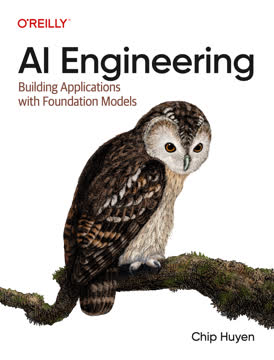
Download PDF
Download EPUB
.epub digital book format is ideal for reading ebooks on phones, tablets, and e-readers.
